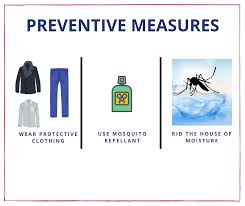Factors Militating against adherence to Lassa Fever Preventive Measures among Market Traders of Owo Local Government Area, Southwest Nigeria

Abstract:
Objective: This study sort to assess
the factors militating against Lassa fever prevention programs among market traders
of Owo LGA Southwest, Nigeria.
Methodology This study employed descriptive cross-sectional
design guided by Precede model. A multistage sampling technique was used for the
study. A total number of three hundred and sixty-two respondents were involved in
the study. A validated semi-structured questionnaire with Cronbach’s alpha of 0.72
was used to collect data. Frequency table, mean, standard deviation correlation,
multiple and binary logistic regression analysis were conducted to give statistical
responses to the research question and hypotheses using SPSS version 23.
Results: Majority of the respondents involved
in this study were females 240 (66.6%) while males, 122 (33.7%) responded to the
questionnaire. The respondent’s level of knowledge
about Lassa fever and lassa fever transmission was 6.558±1.87658. The respondent’s
level of attitudinal disposition towards Lassa Fever was 10.041±3.40782. Respondents’ Lassa Fever preventive
measures was high with a mean of 31.05±14.698. There was a significant
relationship between’ level of knowledge (r=0.219; p <0.05), attitude (r=0.0354; p <0.05) and adherence to Lassa fever
prevention program in Owo LGA.
Conclusion: Findings from the study show market
traders exhibit predisposing factors of religious believe and enabling factors
such Lassa
fever preventive measures like dispose and burn waste on daily basis, food items
stored in a container at the end of each market day, regular handwashing, ensuring
food is properly cooked and preserved, and fruits and drink properly washed before
eating.
Keywords:
ITN Lassa
fever, prevention, adherences, factors.
References:
[1]. World Health
Organization. Lassa fever,
2017. Available at https://www.who.int/news-room/fact-sheets/details/lassa-fever.
Accessed 29 March 2010.
[2]. Centre for
Disease Control and prevention. Lassa fever outreach. Morbidity and Mortality report,
2019. Accessed 5April 2020
[3].
Yun, N. E., and Walker, D. H., 2012, Pathogenesis of
Lassa fever. Journal of virology, 4(10),
2031-2048
[4]. Centre for
Disease Control and prevention. Lassa fever disease, control and prevention, 2018.
Accessed 10 April 2020
[5]. Adegoke, O.,
Ajibola, O., and Ogundairo, J., 2017, Knowledge, Attitude and Practices of foodstuff
sellers on Lassa fever in major Markets in Ibadan, African journal for the psychological studies of social issues, 20-(2),
233-270.
[6]. Adebimpe,
W.O., 2015, Knowledge and preventive Practices against Lassa fever among primary
health care workers in Oshogbo. University
of Mauritus research journal, 6(21), 2022-2150
[7]. Fatiregum,
A.A., Isere, E., Dosumu, M., Agunbiade, O., and Onyibe, R., 2019, Lassa fever awareness
and knowledge among community residents in Ondo State, Nigeria. Journal of community medicine and primary health
care. 31(2), 26-35.
[8]. Adefinsan,
A.K., 2014, The level of awareness that rat is a vector of Lassa fever among the
rural people in Ijebpu North local government, Ogun state, Nigeria. Journal of Educational Pracices, 5(166),
70- 85.
[9]. Adeomi, A.
A., Adeoye, O.A., and Adefemi, A.K. 2017. Perception of senior residents’ doctors
in Nigeria about Lassa fever. American Journal
of preventive medicine and public health, 11(5), 27-34.

